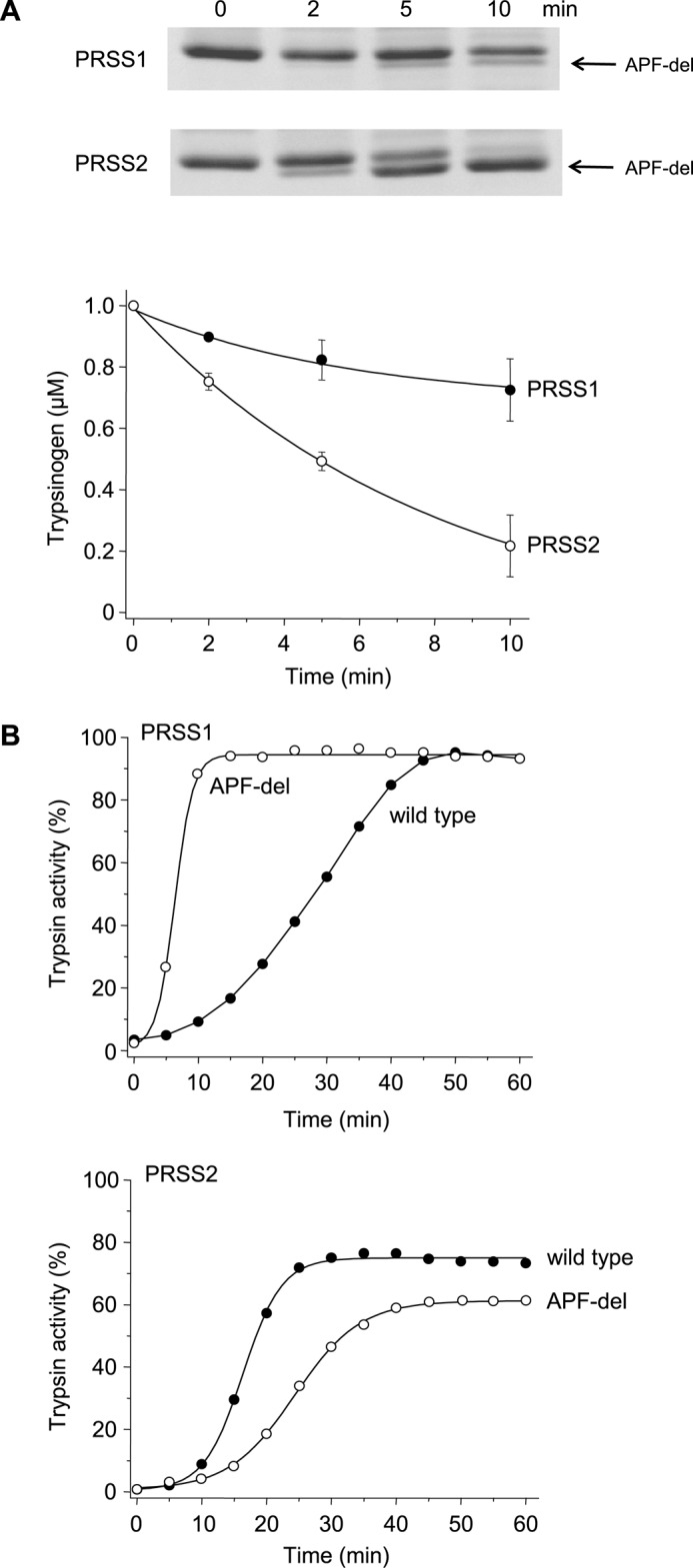FIGURE 8.

Cleavage of the trypsinogen activation peptide by CTRC and its effect on autoactivation of human cationic (PRSS1) and anionic (PRSS2) trypsinogen. A, wild-type human cationic and anionic trypsinogen (1 μm) were incubated at 37 °C with 25 nm CTRC in 0.1 m Tris-HCl (pH 8.0), 1 mm CaCl2, and 20 nm human SPINK1 trypsin inhibitor (final concentrations). To remain consistent with the autoactivation experiments, reactions with anionic trypsinogen also contained 25 mm NaCl. At the indicated times trypsinogen (150 μl) was precipitated with 10% trichloroacetic acid (final concentration) and analyzed by SDS-PAGE under non-reducing conditions followed by Coomassie Blue staining. APF-del indicates the band cleaved at Phe-18 by CTRC. The graph shows densitometric quantitation of the trypsinogen band from three experiments (mean ± S.E.). The calculated rates of cleavage were 30.9 nm/min for PRSS1 and 152.8 nm/min for PRSS2. B, wild-type and N-terminally truncated (APF-del) mutant trypsinogen (1 μm) were incubated at 37 °C in 0.1 m Tris-HCl (pH 8.0), 1 mm CaCl2, and 25 mm NaCl (PRSS2) or no salt added (PRSS1). At the indicated times aliquots (10 μl) were removed, and trypsin activity was determined and expressed as described under “Experimental Procedures.” Experimental uncertainty and reproducibility are discussed under “Experimental Procedures.”
